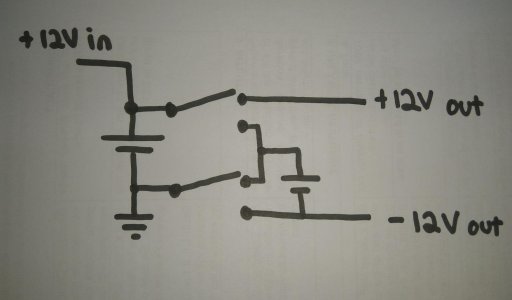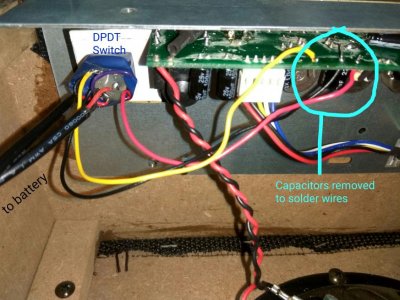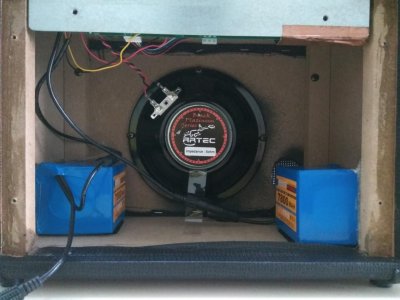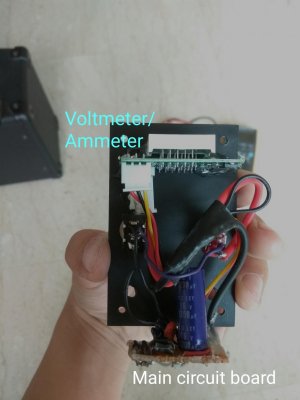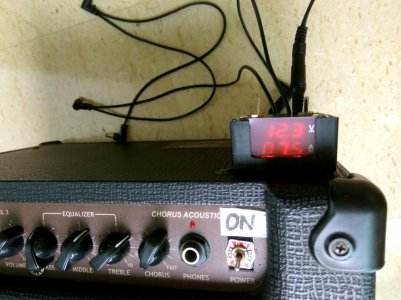Victor Gwee
New member
This started because I decided that I would want to try busking! But I realised I only have an amp that plugs in to the mains... And all busking amps need to be battery-powered.
So I decided to put my sec-school physics to the test and disassemble my 15W acoustic amp
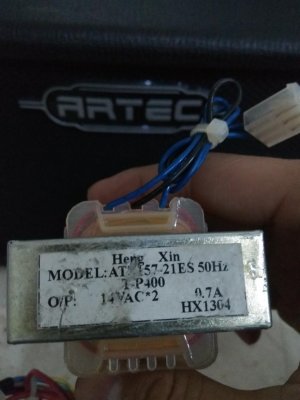
After opening up my amp and removing the transformer, I saw that it gave an output of 14VAC*2 at 0.7A. This means this put out 28VAC with a centre tap (black lead), and I could get decent battery life out of it (pretty low current draw).
I found a 4-legged chip on the circuit board directly connected to the transformer. My suspicion was confirmed when I googled the part number — it was a bridge rectifier! There were also two large capacitors nearby rated for 25v each. Using a multimeter to verify the connections, I deduced it was a split-rail 13v DC supply (accounting for voltage drop across diodes). That's tricky... I'd need at least two 12v batteries.
Another important component was the power amp — the IC that directly drives the speaker. Wasn't hard to find... The LM1875T was attached directly to the case. Googling the datasheet, I found that this operates on a split-rail power supply as well, confirming my deduction.
So this was what I came up with...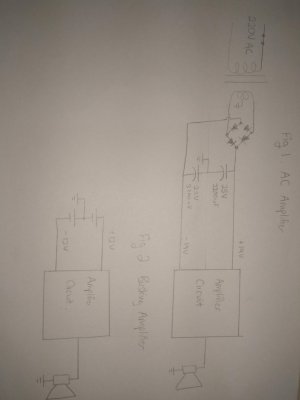
Hopefully I don't wreck my amplifier! Here goes nothing
- - - Updated - - -
Hunting for a battery [Placeholder]
- - - Updated - - -
Putting it all together + Review [Placeholder]
So I decided to put my sec-school physics to the test and disassemble my 15W acoustic amp

After opening up my amp and removing the transformer, I saw that it gave an output of 14VAC*2 at 0.7A. This means this put out 28VAC with a centre tap (black lead), and I could get decent battery life out of it (pretty low current draw).
I found a 4-legged chip on the circuit board directly connected to the transformer. My suspicion was confirmed when I googled the part number — it was a bridge rectifier! There were also two large capacitors nearby rated for 25v each. Using a multimeter to verify the connections, I deduced it was a split-rail 13v DC supply (accounting for voltage drop across diodes). That's tricky... I'd need at least two 12v batteries.
Another important component was the power amp — the IC that directly drives the speaker. Wasn't hard to find... The LM1875T was attached directly to the case. Googling the datasheet, I found that this operates on a split-rail power supply as well, confirming my deduction.
So this was what I came up with...

Hopefully I don't wreck my amplifier! Here goes nothing
- - - Updated - - -
Hunting for a battery [Placeholder]
- - - Updated - - -
Putting it all together + Review [Placeholder]

